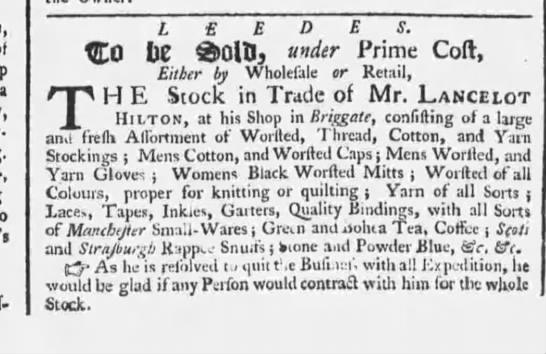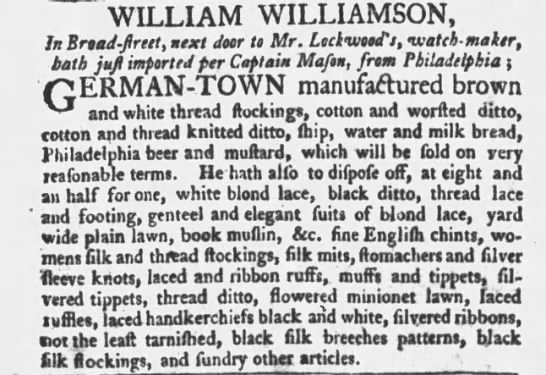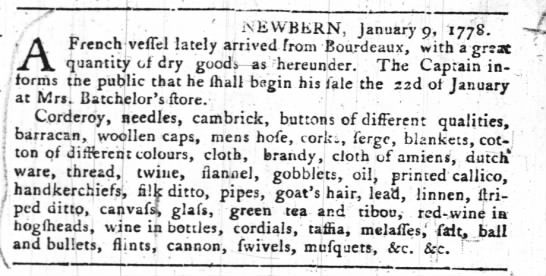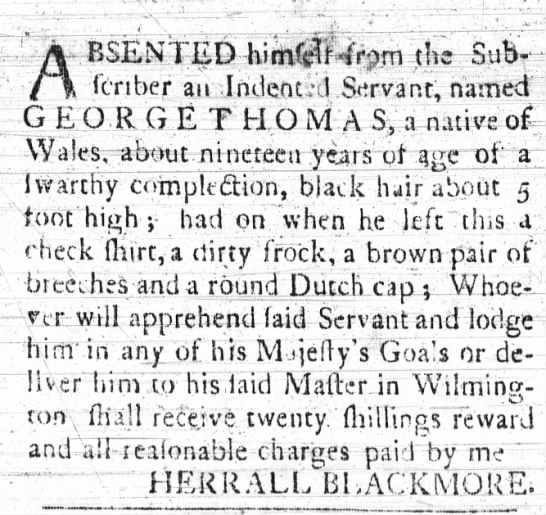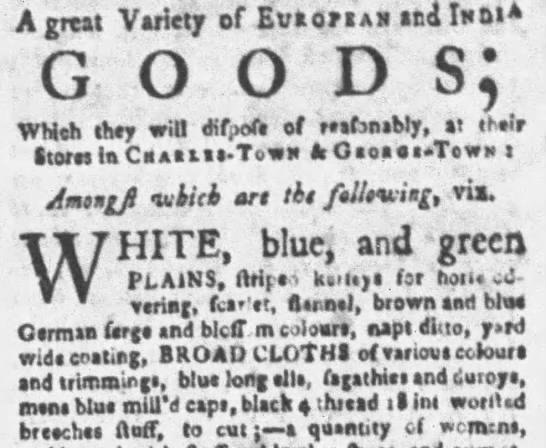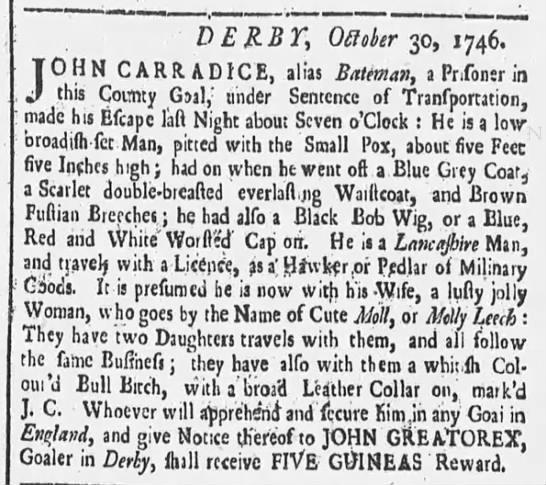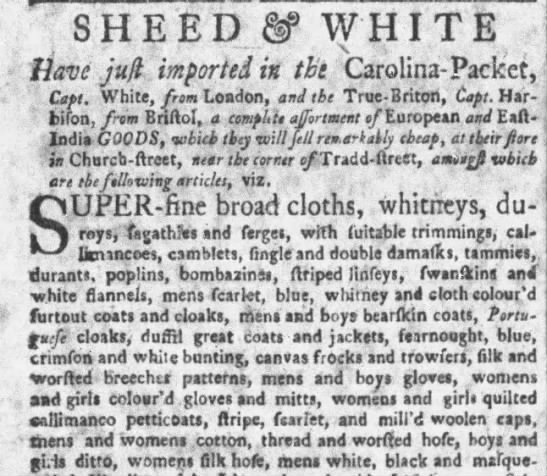 |
Guess who's back from a hiatus? Your friendly history nerd, clothing geek and researcher....
Back in 2024, we had the 250th anniversary of the Edenton Tea Party which was a fun event to participate at - Got to be fancy with a chintz gown, big hair and such. Anyhoo.....Things are starting to kick off this year with the 250th anniversary of two major events here in North Carolina - the battle of Moore's Creek and the Halifax Resolves. So thought this would be a good time to bring the blog back to life and share what I've been researching for the past few months.
So what are women wearing in the early to mid 1770s in North Carolina? Checked, black and white silk bonnets, black silk hats, red, blue and green cloaks, calico gowns, striped gowns, white linen gowns, "short" gowns, quilted petticoats and etc. I'll examine a few inventories and wills to show what women are wearing here in North Carolina prior to 1776.
Amelia Mott, 1771 New Hanover County, North Carolina
Barsheba Jones, 1772 Johnston County, North Carolina
1 quilted petticoat, 2 shifts, 1 pr of shoes and shoe buckles, 1 pr of worsted stockings and garters, 1 cap and handkerchief, 1 checked apron, 1 checked bonnet, silver sleeve buttons, 1 pr of leather gloves and choice of all the gowns. While the rest of her clothes to be equally divided amongst the rest of all her daughters. You wonder what else did she have in her wardrobe?
You may have notice that I bolded the word checked bonnet. Yep, checked bonnets are here in North Carolina. This is probably the latest I have seen reference to them. I wish they would have noted if the bonnet was made of silk or of linen.
Mary McConnell, 1774 Guilford County, North Carolina
Now we move even further inland to Guilford County and we find the will of Mary McConnell dated November of 1774. So Mary leaves to her daughter Mary Blyne: one gown and petticoat, her cloak and one pair of best blankets. She bequeaths to her one daughter Martha Leacky one petticoat, a wraper and some bed curtains, then to her younger daughter she gives her one of her gowns . Then on the next page she lists:
Mary McConnell will, Guilford County, NC: Wills, 1771-1943; Author: North Carolina. County Court of Pleas and Quarter Sessions (Guilford County) Notes: Wills, Vol A-B, 1771-1838
She gives Margaret McBride daughter to Francis McBride her corded poplin gown; she leaves her shoe buckles to her son and then Agnes the daughter of James Blayer receives her bonnet. What exactly is corded poplin? Is it safe to guess that maybe Mary is a Quaker? I haven't found evidence of that yet but something to look into.
Dorothy Seares, 1774 Wilmington, North Carolina
Dorothy Seares, 1774 New Hanover County, estate record and sale. New Hanover County, North Carolina Original Estate Records, Ca. 1741-1942; Author: North Carolina. Probate Court (New Hanover County), North Carolina. Superior Court (New Hanover County)
In the sale of her estate, they list a gown and apron being sold at 17 shillings, 8 pence; while another gown is sold for 1 pound, 1 shilling - which gown was worth more? The calico gown or the white linen?
Then we conclude with the records of two men's estates. The 1775 estates of William Wooten in Hyde County, NC and Dr. James Ward of New Hanover County, NC.
Estate sale of William Wooten, 1775 Hyde County, NC. Source: Hyde County, North Carolina Estate Records, 1735-1944
While Dr. James Ward has a few ladies' items in his inventory such as: 2 sprigged aprons, 1 silk gauze cap, 1 white silk bonnet, 1/2 yard of ribbon, 1 fan and 1 paper box. and 2 1/4 yards of striped lawn. I'll probably go back to examine his estate in a later blog as he has a plethora of textiles and clothing.
Inventory of Dr. James Ward 1775 New Hanover County, NC. New Hanover County, North Carolina Original Estate Records, Ca. 1741-1942; Author: North Carolina. Probate Court (New Hanover County), North Carolina. Superior Court (New Hanover County)
Thanks again for checking out my blog. I hope you enjoyed these inventories and wills. They let us have a sneak peek of the past and allow us to learn more. Till next time. Keep researching and always ask questions!





































